It is difficult to be sure about our planet’s likely trajectory if this month’s United Nations Climate Change Conference (Cop26) fails to chart a convincing course for reduced carbon emissions or muster the political will to implement socially and economically uncomfortable measures.
The last chance saloon has erratic opening hours, and we do not know exactly when last orders will be called. It may already have stopped serving, in which case there will be no alternative to an accelerating climate crisis and with it all the associated civil unrest, mass migration, famine and devastation of our natural and built heritage that we tend to put to the back of our minds when not reading about it.
On the other hand, opening hours may be extended a bit; we are an ingenious species with a history of heroic and successful last ditch efforts. Hope is a moral obligation in our circumstances.
The last chance saloon has erratic opening hours, and we do not know exactly when last orders will be called
But hope is not a strategy. Humanity’s tangible heritage is profoundly threatened by the environmental calamity that constitutes our current way of life. From the pre-Columbian Chan Chan in Peru to Neolithic Orkney, from the lagoon in Venice to the Chinguetti Mosque in Mauritania, historic buildings, whole districts, archaeological and sacred sites and cultural landscapes are all at risk from storm surges, floods, landslides and wildfires.
Extreme weather events are just one threat. More insidious is that higher (and more ubiquitous) temperature and humidity levels are corroding masonry and metals, and exacerbating the freeze-thaw cycles that lead to structural failure in stone and brick. Known as thermoclastism, the process is affecting many fragile French historic monuments in particular. Wind-driven rain results in greater water penetration of—and damage to—porous building materials. Changes in water tables and soil composition have a similar impact.
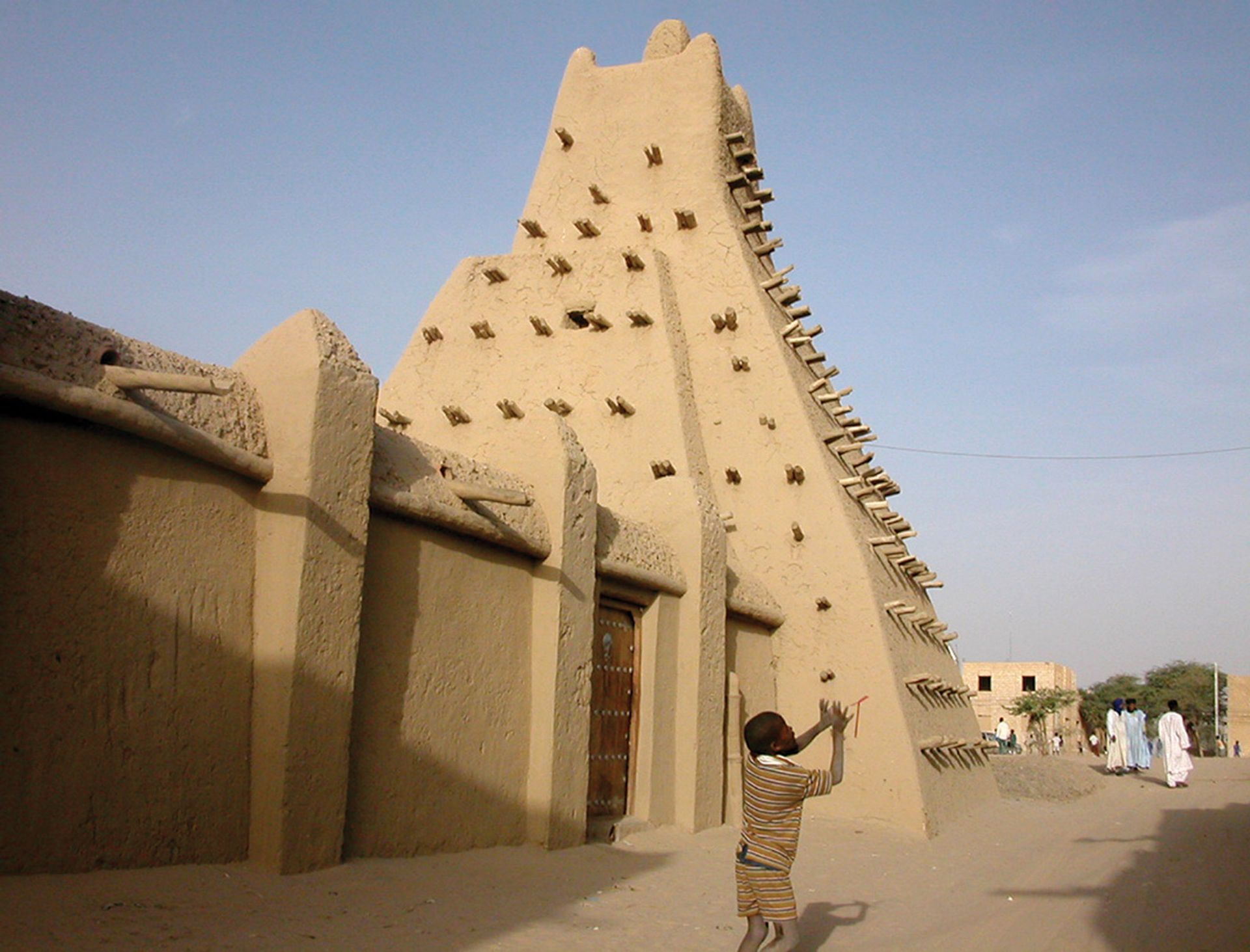
Fear factors: in Mali, where climate insecurity has driven a destabilising civil conflict, TImbuktu has endured repeated terrorist attacks on its ancient cultural heritage Photo: Lazare Eloundou Assomo, © Unesco
Changes in indoor temperatures and humidity are prohibitively expensive to control for many institutions and are leading to the biological degradation of museum collections and archives—for example, in Izmir’s Necip Paşa Library. Warmer temperatures are accelerating the incidence of fungal attack and infestation by insects, as documented by the Swedish Museum of Natural History.
Intangible culture is no less at risk. Cultures, customs and languages are being destroyed as a result of famine, mass migration and civil war, which are in turn the result of desertification and rising sea levels. The conflicts in Syria and Sudan, for example, are in part “climate wars”, fuelled by migration from drought-affected areas to regions where conditions were already tense.
Effective responses to the numbing enormity of this predicament are challenging. Mitigation, adaptation and emergency preparedness efforts by individual government agencies, local communities and NGOs are essential. In dense urban areas—Miami, say, or New York—heritage assets fall within the umbrella of more comprehensive protective strategies. In isolated sites in vulnerable locations, the challenges are greater and comprehensive approaches require formidable resources. But such efforts are Sisyphean unless the progressive deterioration of climatic conditions are addressed at its source, and that can only be done through coordinated international efforts.
The 196 countries that signed up to the Paris Agreement in 2015 undertook to come back with an updated plan every five years. Cop26—delayed for a year by Covid—represents their chosen occasion to revisit the agreement and tailor it to current realities. The prospects for Cop26 as it convenes in Glasgow this November are therefore of fundamental importance to the future of our past and our tangible and intangible heritage.
The grand plan
Those 196 countries signed up to developing strategies and funding sources that would keep the rise in the global average temperature to—famously—“well below 2 degrees Celsius above pre-industrial levels, ideally 1.5 degrees” by cutting greenhouse gas emissions. The treaty was bottom-up, with individual states left to figure out individually how best to meet the targets to which they had all committed—phasing out fossil fuels, halting deforestation, developing new technologies such as carbon capture.
They were each responsible for figuring out how to finance those goals. With the G20 countries responsible for 80% of global emissions, it also committed economically advantaged countries to supporting the efforts of less advantaged ones to the tune of $100bn per annum.
A recent survey of 10,000 16- to 25-year-olds around the world found that 56% believe humanity is doomed
The treaty was seen as a milestone in staving off the climate crisis, reducing existential dread around the world a few notches. But that collective sense of dread has again risen significantly. A recent survey of 10,000 16- to 25-year-olds around the world found that 56% believe humanity is doomed. It is a deeply sobering statistic, with myriad ramifications for mental health and civil unrest.
The reasons for this profound despair have been described in innumerable articles in the world’s media, spiking in the run-up to Glasgow. They can be summarised as follows.
First, the world has been experiencing a series of unprecedented and accelerating extreme climatic events—fires, droughts, floods, hurricanes—offering vivid evidence of a more rapid deterioration in climatic conditions than the scientific consensus at the time of the Paris Agreement suggested.
Second, earlier this year the Intergovernmental Panel on Climate Change—the UN body that deals with assessing climate science—concluded that to have a chance of limiting warming to a maximum of 1.5 degrees above pre-
industrial levels, global emissions must halve by 2030 and reach “net-zero” by 2050 and that this would only be possible if “unprecedented” action is taken now.
Third, there appears to be neither the technical means nor the political will to meet the Paris targets, although—as the IPCC also concluded—those targets will themselves need to be made more stringent to head off the worst scenarios. Net zero and the new or updated emission targets (nationally determined contributions, or NDCs) required to meet the goal are therefore central to the Cop26 agenda.
Although it is difficult to see through the fog of pre-summit political brinkmanship, there is, counterintuitively, less sense of urgency than in 2015 for a number of reasons. Perhaps the most intractable is that geopolitical and intergenerational inequities in the impact of the climate crisis have become starkly evident as its effects are increasingly felt. We are not “all in this together”.
The nihilistic 2017 decision of former President Donald Trump to remove the US from the Paris Agreement may have been reversed but the encouragement it gave to other populist leaders such as Brazil’s Jair Bolsonaro has caused lasting damage to momentum. Effective global governance and international co-ordination have also been eroded over the past five years by burgeoning nationalism, Cold War-style stand-offs between super-powers, and newly divisive priorities such as Covid vaccine distribution.
Stayaways, laggards and sit-tighters
While concerted global action at governmental level has never been more urgent or important, the international coalition that signed the Paris Agreement is fragile and frayed. At the time of writing, Presidents Xi Jinping and Vladimir Putin are two of the most important heads of state who have not confirmed attendance. Although US President Joe Biden will be in Glasgow, he has been unable to secure the backing of Congress for his climate mitigation agenda. Seventy countries have yet to communicate their new NDCs while Australia, Brazil, Indonesia, Mexico, New Zealand, Russia, Singapore, Switzerland and Vietnam have submitted NDCs without the increases needed to meet the revised goals.
In the current extraordinary predicament, it is not easy to define the responsibilities of the cultural sector or of its leaders, whose job is to protect material and intangible culture. For many, the responsibility feels both personal and confounding. The failure of national governments to offer a convincing framework for action, the relatively late hardening of scientific opinion about the multifaceted nature of climatic cause and effect, the fragmented and partial nature of individual institutional missions and mandates—all have made climate-related action relatively anaemic and surprisingly recent given that Unesco was flagging damage to built heritage back in the 1970s.
There are many expert and sector bodies—Unesco, Icom, Icomos—that lead on these issues, undertake research and disseminate best practice in site and object management under climatic stress. And many smaller non-profits lobby and provide advice to the sector on sustainability. But a fundamental gap remains between the risk to our collective heritage—now almost universally acknowledged—and the scale and nature of the response of the community with the duty of maintaining it. Indeed, institutional leaders are so recessive on this issue that it is not difficult to imagine a traumatic climatic event for which the cultural sector has no meaningful responsibility prompting a backlash against a generation that has failed to address the climate crisis proactively and energetically. It could be one that matches the reckoning around racial and social equity in the sector precipitated by the murder of George Floyd.
Global public opinion is increasingly supportive of climate action. The largest ever survey of public opinion on the matter was undertaken in 2020 by Oxford University for UNDP, polling over a million people in 50 countries. Climate change was identified as a global emergency by 72% in Western Europe and North America, 65% in Eastern Europe and Central Asia, 64% in the Arab states, 63% in Latin America and the Caribbean, 63% in Asia and the Pacific, and 61% in sub-Saharan Africa. Greta is not alone.
Cultural leaders are currently concerned with issues of ‘relevance’ and with the place of social responsibilities on their institutional agendas. In advocating openly for more aggressive international action on climate, they would be championing an agenda that is socially resonant and relevant, and one that at the same time is linked directly to the cultural and heritage sector’s core responsibilities. It would also provide a context for partnerships and alliances in civil society well beyond the cultural sector itself. They would, of course, need in the process to demonstrate unequivocally their own institutional commitment to the agenda.
• Additional research by Mario Washington-Ihieme of AEA Consulting
Cracking, crumbling, collapsing: Heritage in danger

Brown carpet beetle
This pest has been identified as a specific threat to organic objects across museums in Scandinavia. Researchers have predicted that the warming of the climate in northern Europe will stimulate the consumption activity of the beetle’s larvae, which feed on such artefacts and show a particular preference for works that incorporate wool.
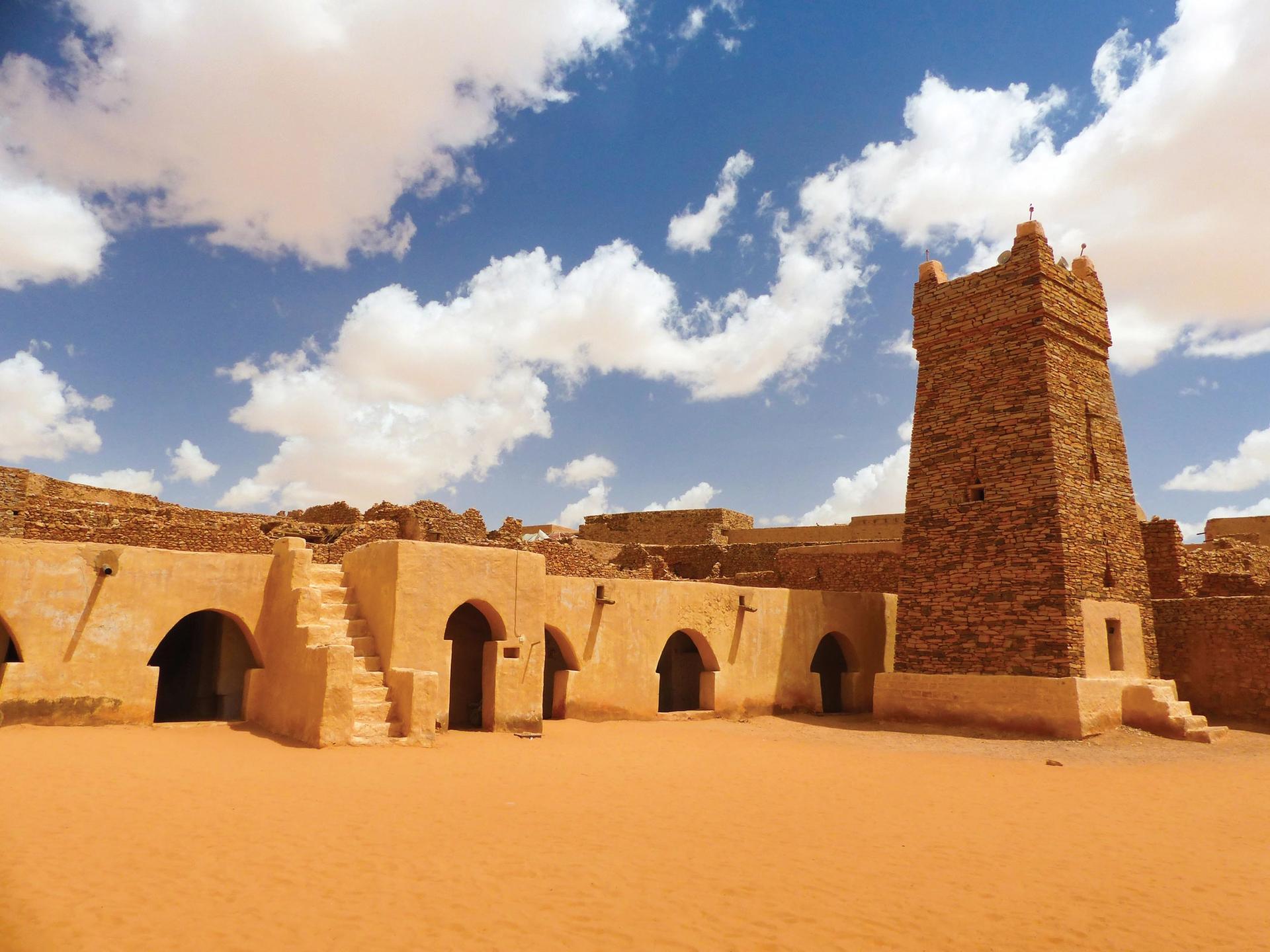
© Mohamed Natti
Chinguetti Mosque, Mauritania
Extreme temperatures, desertification, salt weathering, flash floods, soil erosion—all threaten the structural integrity of this 13th-century mosque, which is surrounded by the shifting and encroaching dunes of the western Sahara Desert. Sand currently piles up in the narrow paths between the buildings of the now largely abandoned surrounding city.
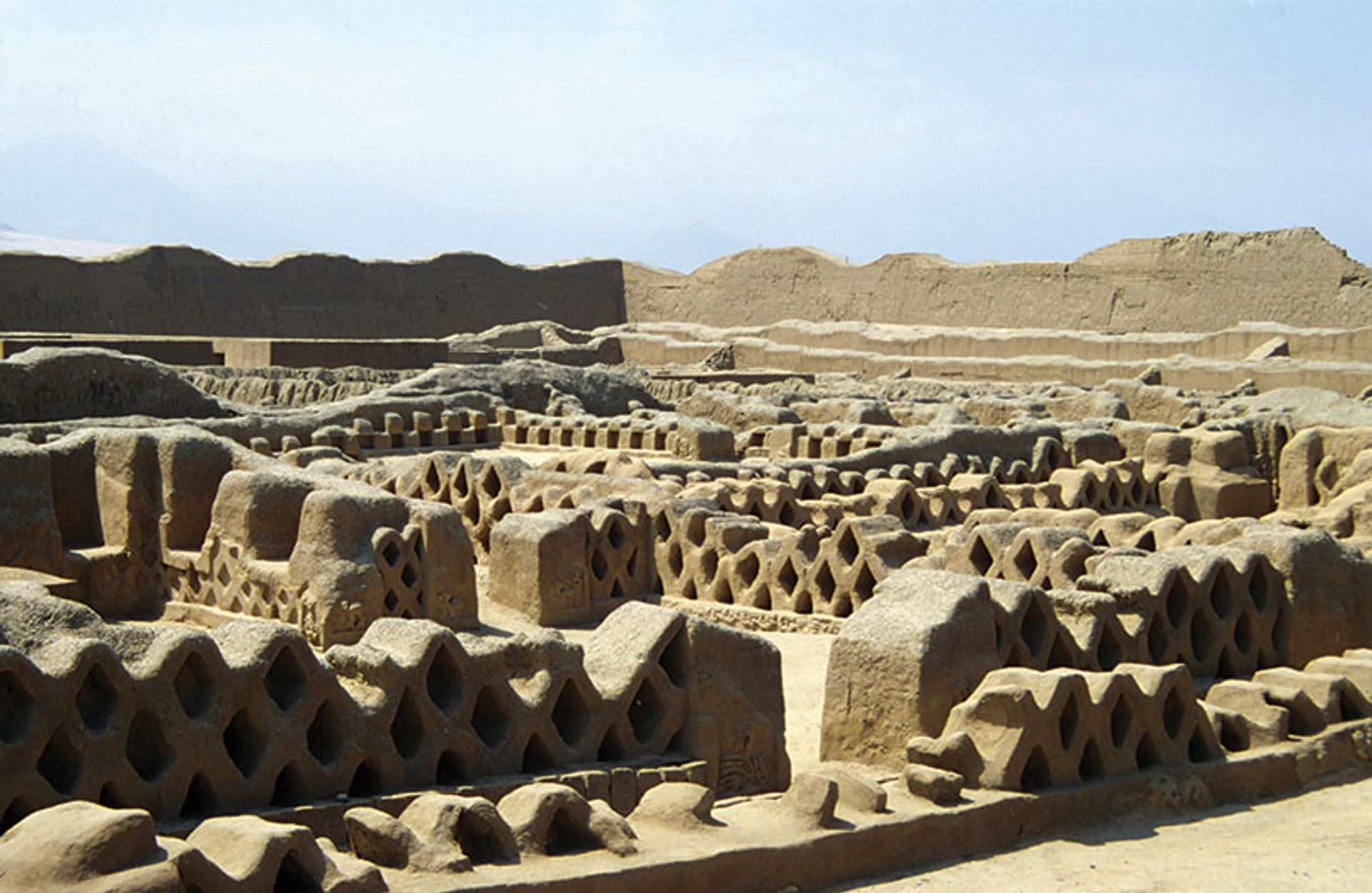
© Tyler Bel
Chan Chan, Peru
Hailed as a masterpiece of urban planning, the ancient city of Chan Chan was the capital of the Chumu kingdom, which flourished 850-1470. In its heyday, around 600 years ago, Chan Chan was the greatest adobe-built city on earth, but the earthen structures are now slowly turning to mud, due to unusually persistent heavy rainfall and flash flooding.
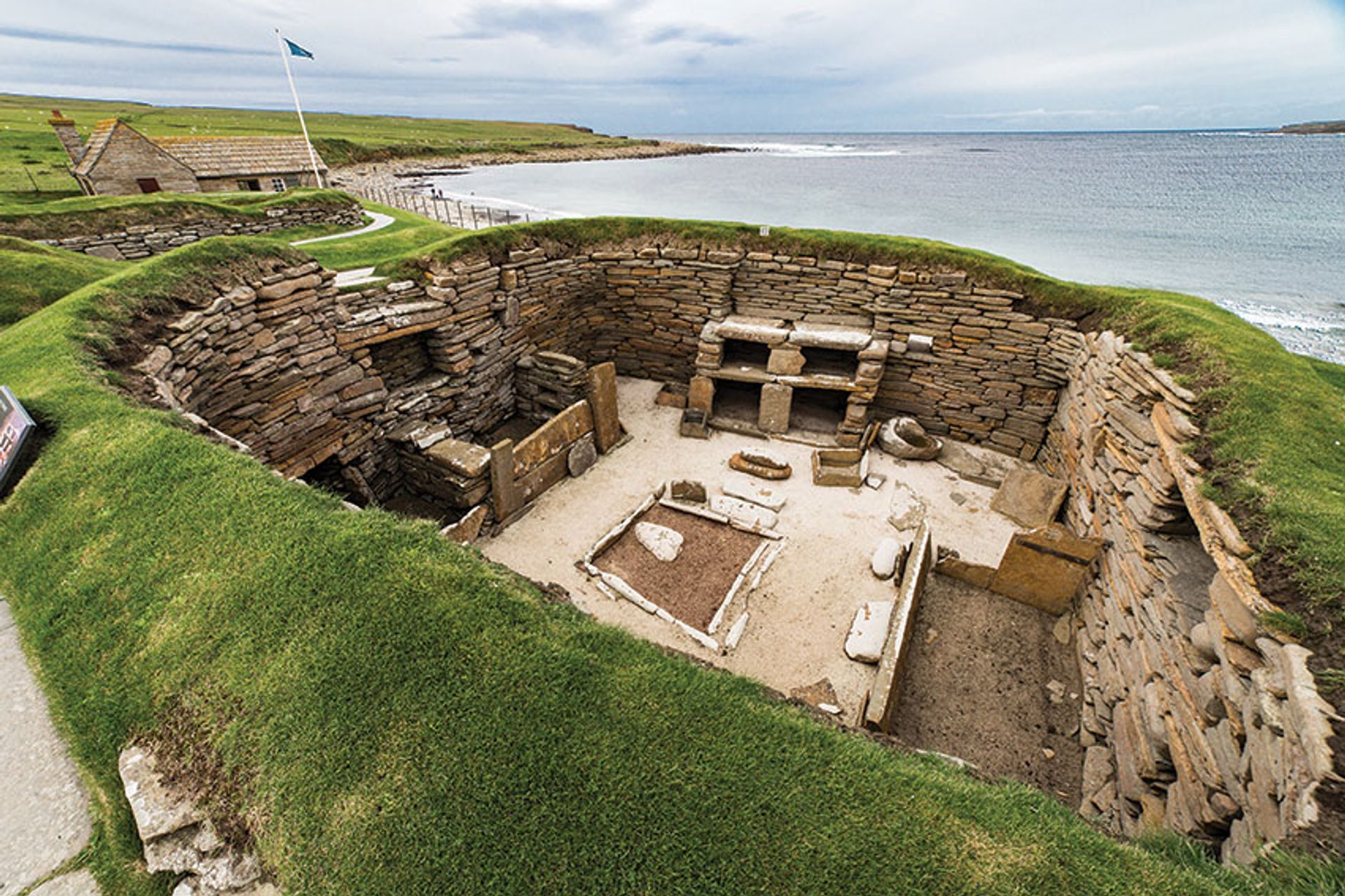
© Dave Sutherland
Neolithic Orkney
The shoreline location of this archipelago site makes it highly vulnerable to even a small rise in sea levels brought about by climate change. Heavier rainfall and greater storm intensity are also risks. Given the right wind direction and swell, one big storm could sweep the entire Skara Brae settlement into the sea.
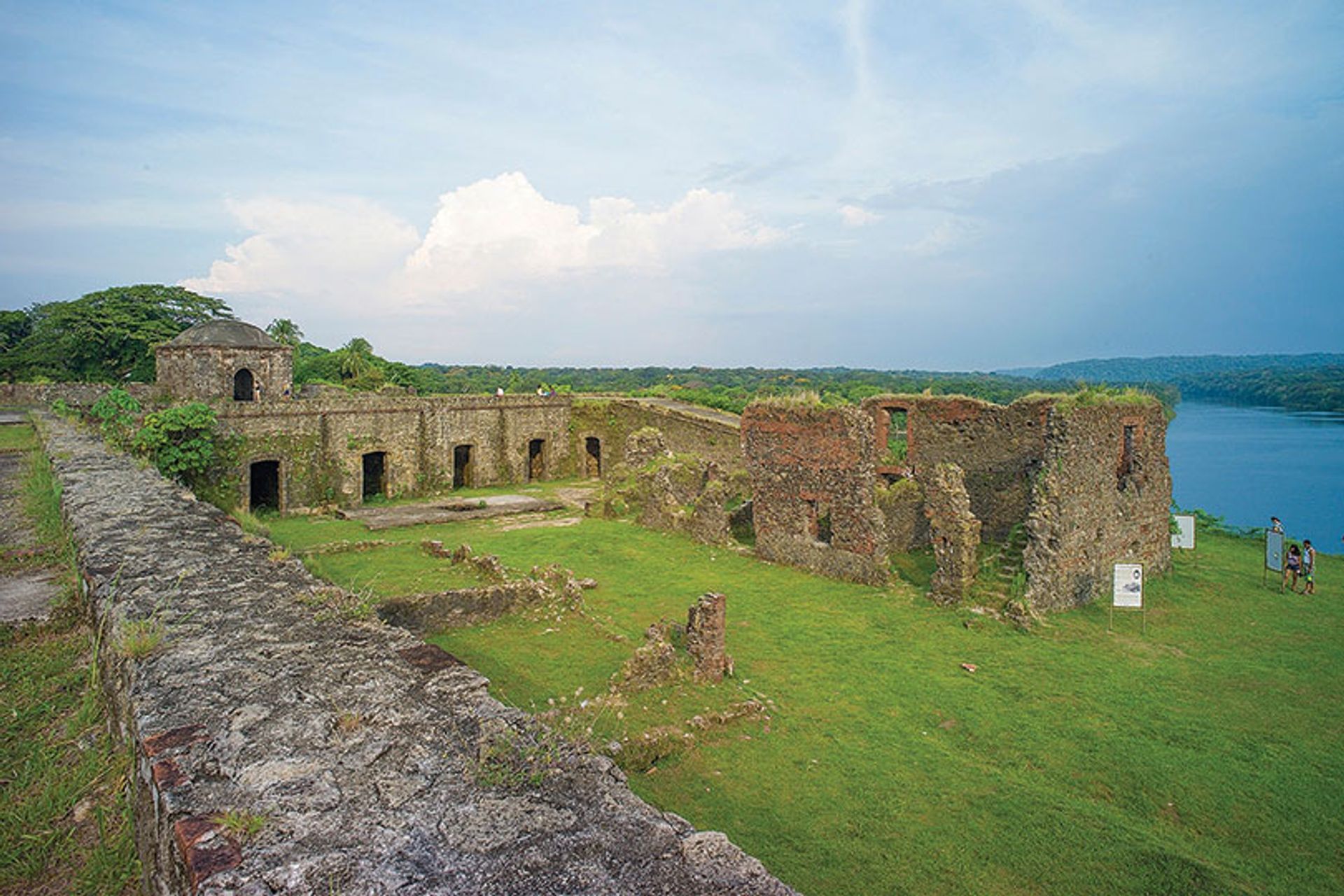
© Ko Hon Chiu Vincent
Panama
Extensive material damage at Panamá Viejo and the Fortresses of Portobelo and San Lorenzo has been predicted. The carbonate stones at the sites have a porosity level of less than 25%, making them highly susceptible to water damage from expected heavy rainfall, high humidity and hot temperatures.

© Steven dos Remedios
Carrara marble
The Italian material of choice for Europe’s sculptors and architects through the ages risks crumbling as the mineral grains and salts in the stone expand and contract at different rates as a result of thermal stress. Some 300 such events are forecast for the final three decades of this century, with central Europe particularly affected.


